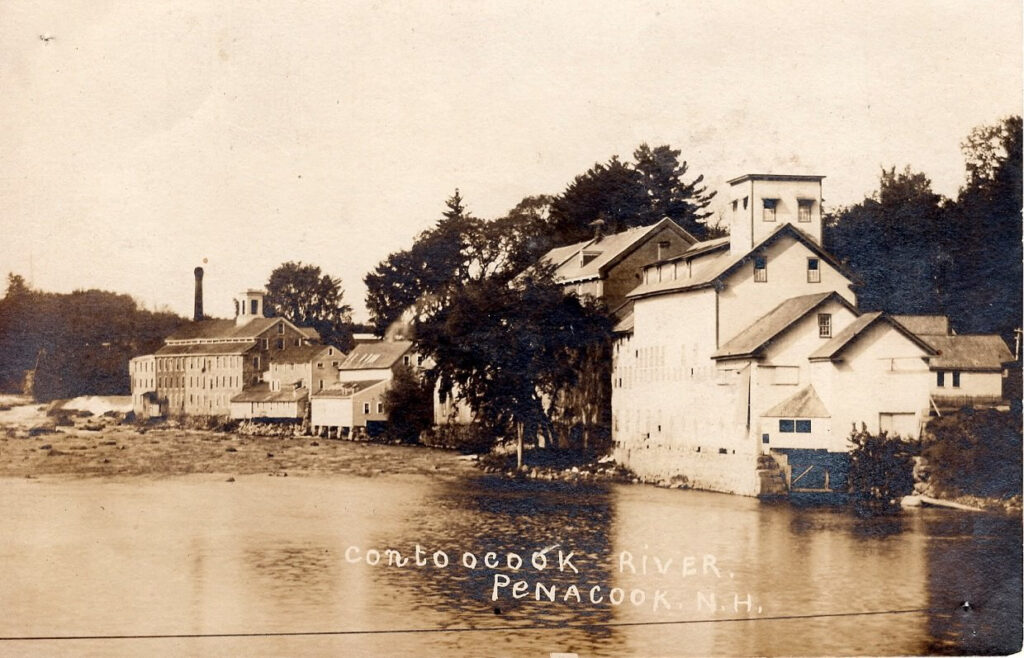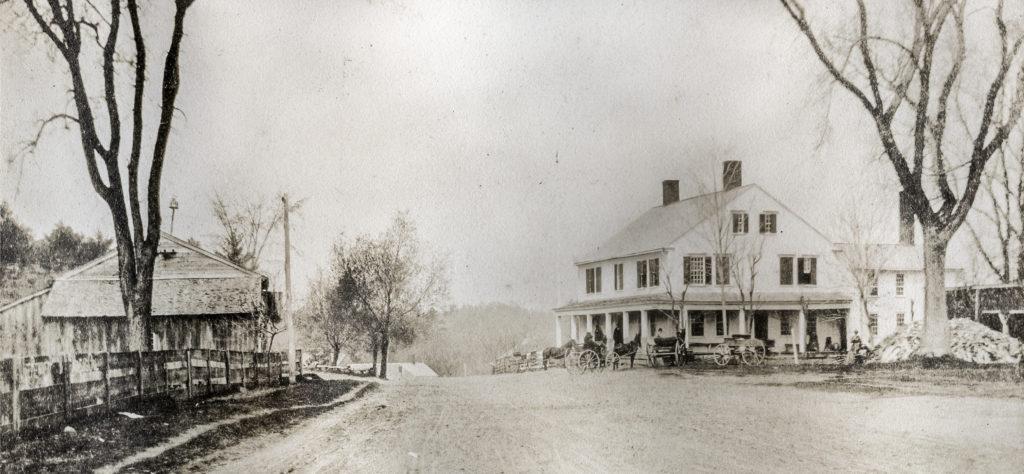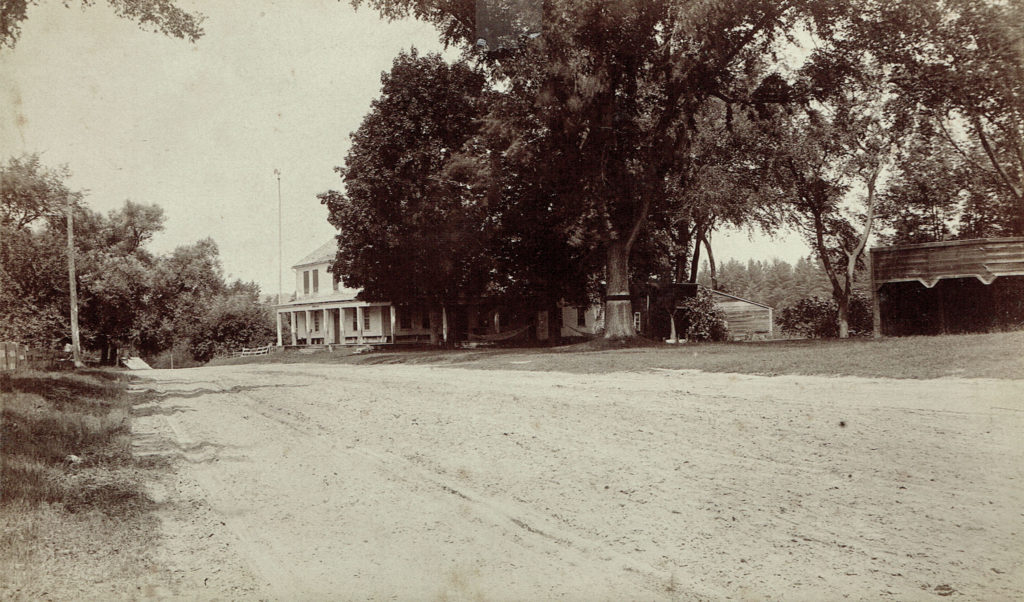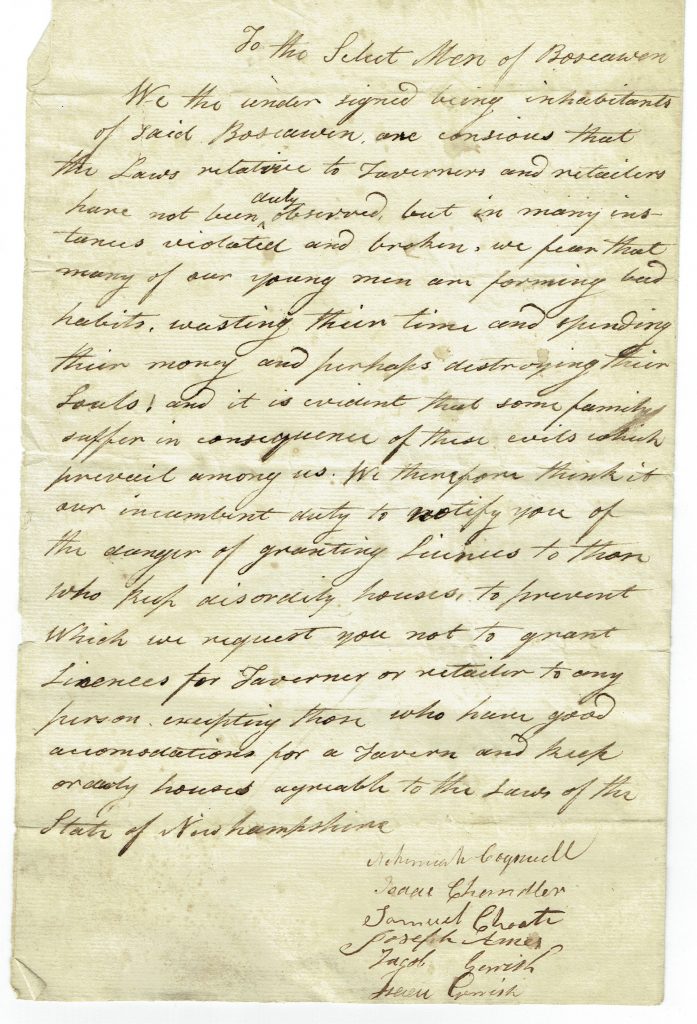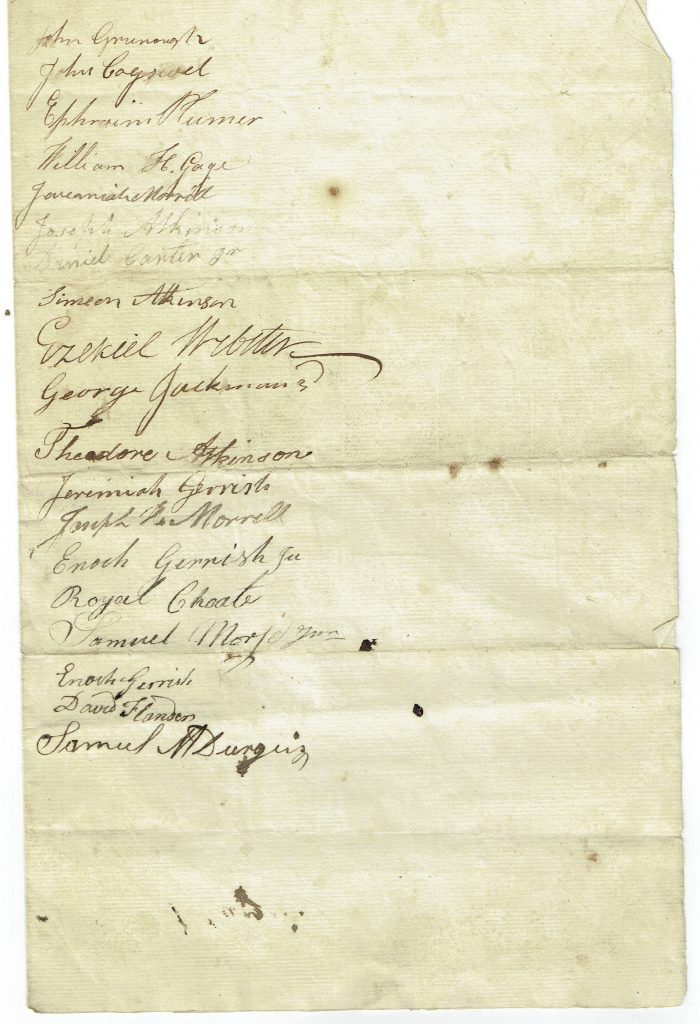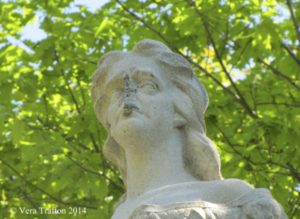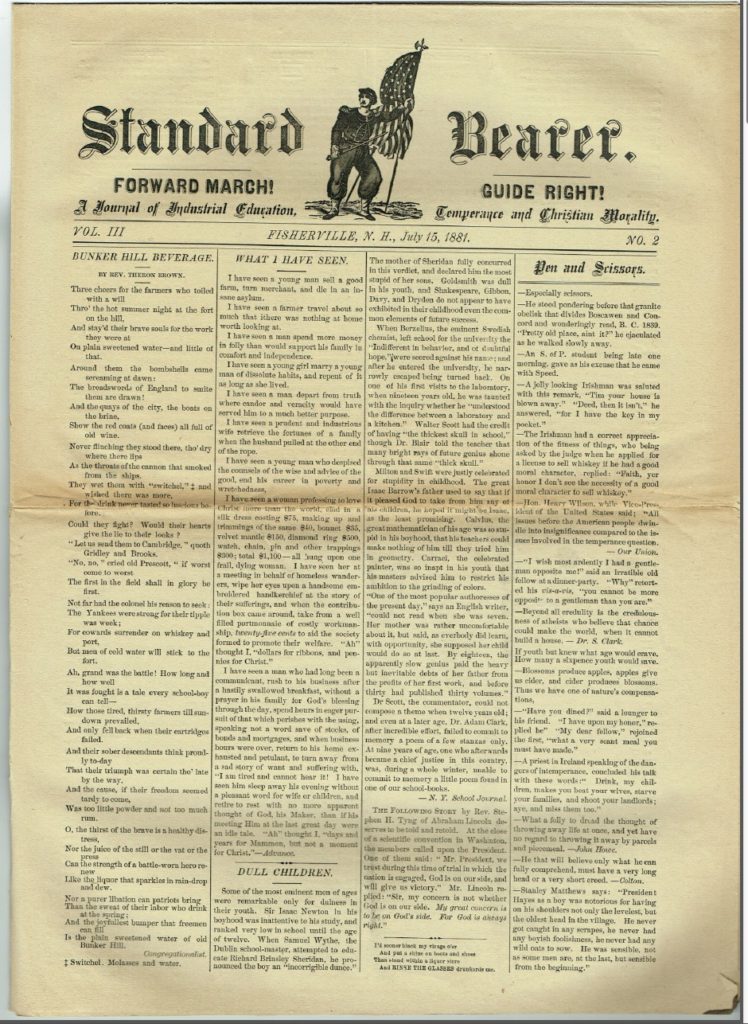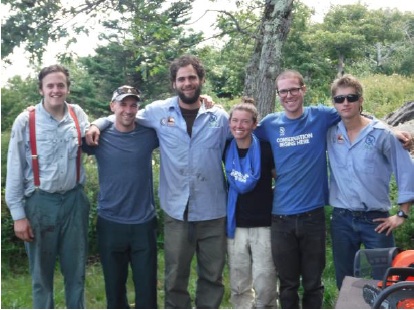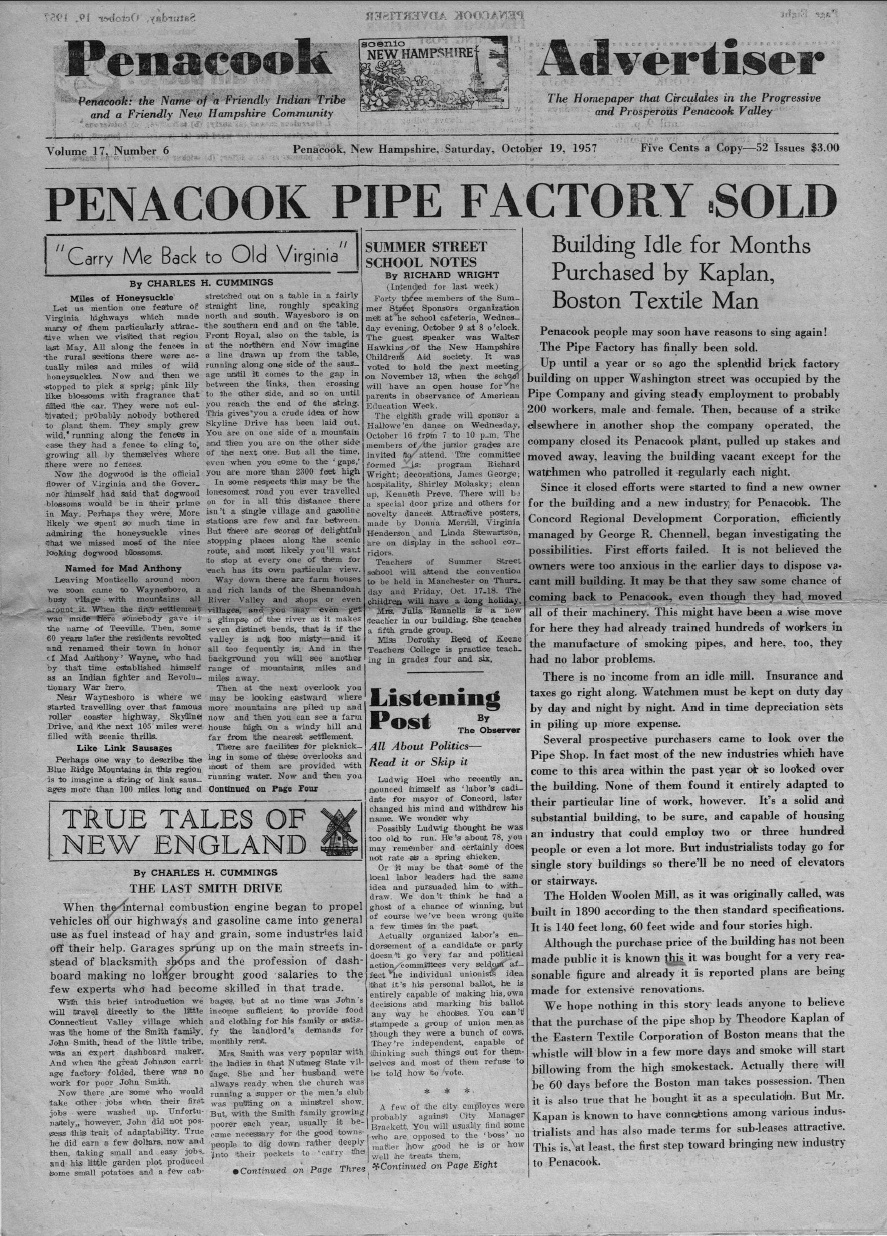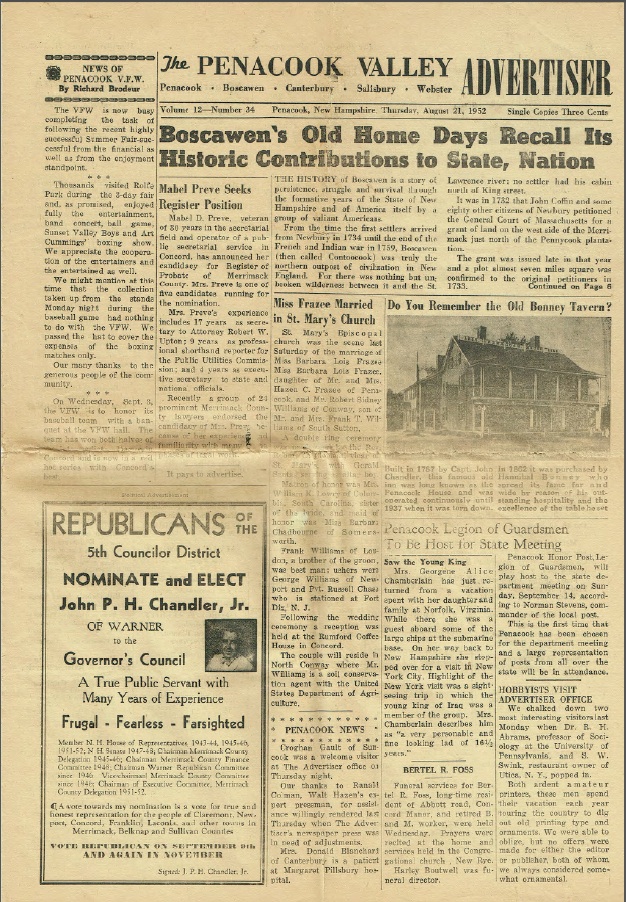A Brief History of Commercial Street
Ambrose Tavern
We the undersigned………..
1946 Welcome Home Celebration
(Excerpt from the 1983 History of Boscawen, written by Ron Reed)
In 1946 the Old Home Week committee selected the theme of “Welcome Home Day” for the annual festivities. The program was designed to honor the returning veterans and servicemen who served their home town and country in World War II. As the days counted down, the town continued to prepare for the celebration. More than forty of the property owners agreed to pay the cost of having their homes and stores decorated with flags and bunting for the occasion, and with few exceptions, all of the properties fro the Town Hall to Jones’ Hill were decorated. A service flag, representing all the men and woman who entered the armed forces from Boscawen., was ordered by the committee. The flag, which was four by six foot with one gold bar bearing the figure 5 (the number of killed in the service) and one blue star bearing the figure 210 (the number enrolled in the service), was to be displayed during the days of the festivities.
The celebration began on Saturday, August 17th, at 2:30 o’clock with a baseball game held at the Church Park. The game between the veterans from upper and lower Boscawen. Lower Boscawen was victorious. At 6:00 o’clock, a “We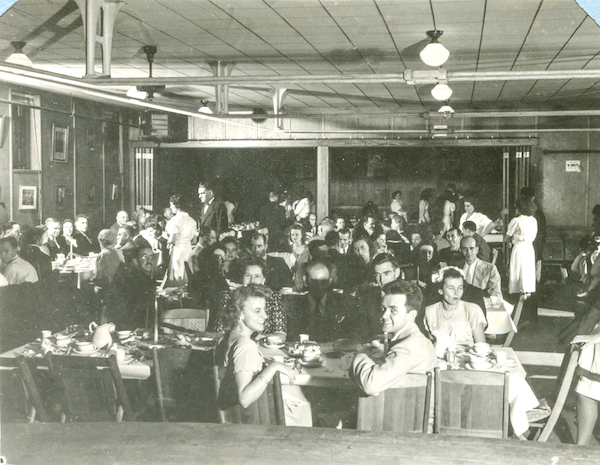
On Sunday, August 18th, at 10:30 o’clock, the celebration continued with a morning worship service attended by 250 at the Church Park. Rev. Roger P. Horton was the speaker at the service and music was supplied by the Congregational Church’s choir and Flossie Folsom, pianist. At noon, family groups gathered for a picnic lunch. A highlighted and colorful event was the parade at 1:30 o’clock. The Never’s Band lead the parade and Joseph Colby was the Marshall. Veterans from both World War I and World War II marched in full dress, the various children and and adult groups participated in the parade by riding on floats or marching and the selectmen, Howard Holmes, Clyde Fairbanks and Jesse Braley, rode in a cart pulled by oxen. At 2:30 o’clock, the Welcome Home events continued with Norris Cotton, GOP Congress nominee, who was the first speaker. A memorial service followed, in remembrance of the five men killed in the war., conducted by Rev. Asa Parker. Those five men who gave their lives were: Joseph G. Annan, Leo J. Cournoyer, Clinton R. Hollins, Robert R. McIntyer and Leonard W. Peirce. Later the Never’s Band performed, and Peirce Virgil Chaffin and Arthur Faneuf sand to the music played by Flossie Folsom. The final event of the celebration was a modern fire fighting equipment demonstration by the Torrent Engine Company. It was an Old Home Day to remember!
Hannah Duston – Heroine and Witness
Heroine and Witness
William Andrews’ Monumental Statue of Hannah Duston
Given at the Deerfield-Wellesley Symposium 2015
“Outside the Gallery: Public Sculpture in New England”
Historic Deerfield, 14 March 2015
Revised and Updated for the Boscawen, NH, Historical Society Website
26 October 2015
Standard Bearer – Fisherville N.H. – July 5, 1881
In 1880 the Rev. J. H. Larry assumed the position of Principal of the Penacook Academy in Fisherville, N.H. and established the “School of Practice”. For the next three years the school published a semi-monthly newspaper called “Standard Bearer” which had a circulation of around 1,000 copies per printing. In 1883 the school closed and the newspaper was no longer published.
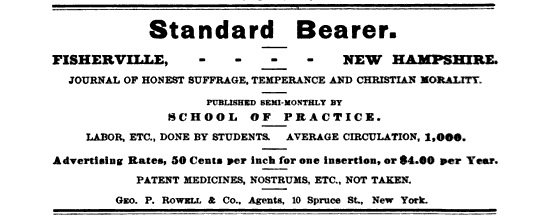
Published Fortnightly – By the “School of Practice” – FISHERVILLE, N. H.
“Here we unfurl our Standard, and enter the ranks of Virtue against Vice, Knowledge against Ignorance, Labor against Idleness, Truth against Skepticism.”
Click the image to read the complete July 15, 1881 edition.
Hannah Dustin Memorial Site Cleanup
The Boscawen Historical Society would like to thank Student Conservation Association, AmeriCorps and the State of New Hampshire Division of Parks Recreation for the hard work that was put forth at the Hannah Dustin Memorial Site.
Click here to read the entire story.
Click here to learn more about the Student Conservation Association
Click here to learn more about AmeriCorp
Click here to learn more about the New Hampshire Division of Parks and Recreation
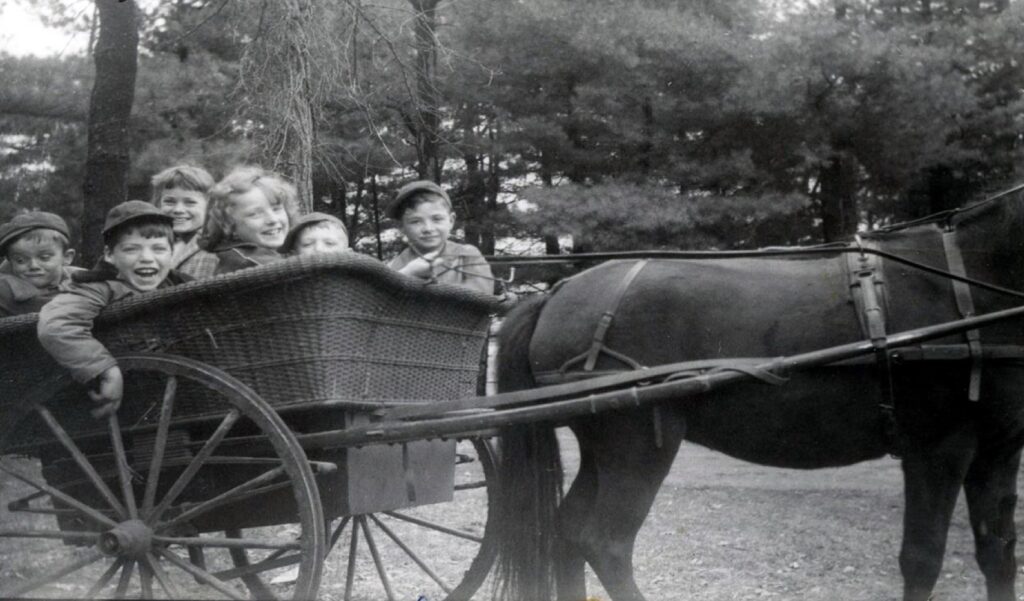
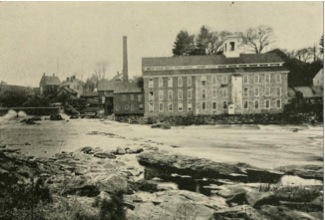 It was about 1790 when Jeremiah Chandler built the first gristmill at the lower falls of the Contoocook River near its confluence with the Merrimack River. The mill was located on the south end of Commercial Street between the dam and the future site of the Harris woolen mill. It was only ten years later that Richard Kimball and Jeremiah Abbott introduced the first woolen processing mill in the area, a carding and cloth finishing mill. In 1847, Almon Harris purchased the land these mills occupied and built the three story 75’ x 40’ stone building pictured here.
It was about 1790 when Jeremiah Chandler built the first gristmill at the lower falls of the Contoocook River near its confluence with the Merrimack River. The mill was located on the south end of Commercial Street between the dam and the future site of the Harris woolen mill. It was only ten years later that Richard Kimball and Jeremiah Abbott introduced the first woolen processing mill in the area, a carding and cloth finishing mill. In 1847, Almon Harris purchased the land these mills occupied and built the three story 75’ x 40’ stone building pictured here.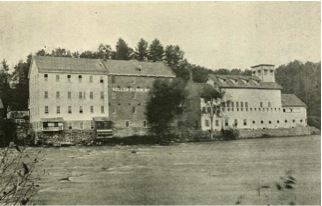 The first flour mill was built in 1857 by Calvin and John C. Gage at the north end of Commercial Street. Within two years of its construction it was sold to John H. Pearson & Co. of Concord. He operated the mills and a warehouse until 1867 when he sold the business to Barron, Dodge & Co., who ran the flour business until 1871, when the Whitcher & Stratton Company was formed. Upon the retirement of Mr. Whitcher, Henry C. Merrill of Manchester joined George L. Stratton and William K. MacFarland to form Stratton, Merrill & Co.; they re-built and modernized the mills.
The first flour mill was built in 1857 by Calvin and John C. Gage at the north end of Commercial Street. Within two years of its construction it was sold to John H. Pearson & Co. of Concord. He operated the mills and a warehouse until 1867 when he sold the business to Barron, Dodge & Co., who ran the flour business until 1871, when the Whitcher & Stratton Company was formed. Upon the retirement of Mr. Whitcher, Henry C. Merrill of Manchester joined George L. Stratton and William K. MacFarland to form Stratton, Merrill & Co.; they re-built and modernized the mills.